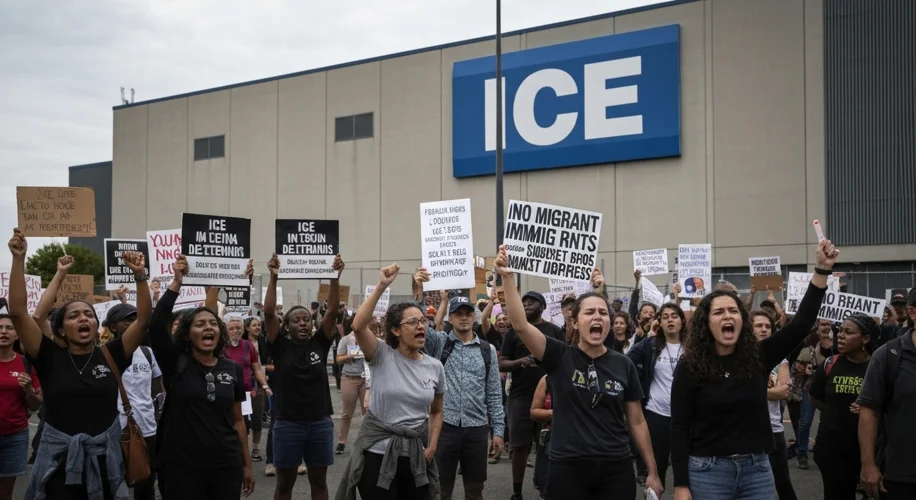The United States, a nation built by immigrants, has a long and complex history of managing its borders and welcoming newcomers. Over the centuries, the systems and agencies responsible for this have evolved significantly, reflecting changing political climates, societal anxieties, and global events. One of the most prominent, and often controversial, agencies in this ongoing narrative is U.S. Immigration and Customs Enforcement, commonly known as ICE.
ICE was established in March 2003 as part of a massive governmental reorganization following the September 11, 2001 terrorist attacks. Its creation was a direct response to the perceived need for a more consolidated and robust approach to national security and border management. ICE was formed by merging the investigative and interior enforcement functions of the former Immigration and Naturalization Service (INS) with the U.S. Customs Service and the Federal Protective Service. This consolidation aimed to create a single, powerful agency with a broad mandate over immigration law enforcement, customs, and border security within the nation’s interior.
The agency’s responsibilities are vast and multifaceted. At its core, ICE is tasked with enforcing federal laws governing border security, customs, trade, and immigration. This includes identifying and mitigating vulnerabilities in the nation’s borders and economic infrastructure, and enforcing these laws to protect public safety and national security. However, it is ICE’s role in interior enforcement, particularly deportations, that has drawn the most public attention and debate.
Within ICE, two principal directorates carry out these missions: Enforcement and Removal Operations (ERO) and Homeland Security Investigations (HSI). ERO is responsible for identifying, apprehending, detaining, and removing individuals who violate immigration laws. This involves conducting surveillance, executing arrest warrants, and managing detention facilities. HSI, on the other hand, focuses on cross-border criminal activity, including human smuggling, drug trafficking, financial crimes, and intellectual property theft, often working in conjunction with international law enforcement agencies.

The history of immigration enforcement in the United States predates ICE by centuries. Early immigration policies were largely state-driven, with federal involvement gradually increasing. Agencies like the Bureau of Immigration and the INS played roles in processing immigrants and enforcing laws. However, the post-9/11 security landscape ushered in a new era, leading to the creation of the Department of Homeland Security (DHS) and, subsequently, ICE. This shift centralized many functions previously dispersed across different government bodies.
ICE’s impact on immigrant communities, particularly in recent decades, has been profound and polarizing. Proponents argue that ICE is a vital agency performing necessary functions to maintain the rule of law, deter illegal immigration, and combat transnational crime. They emphasize that ICE officers enforce laws passed by Congress and that their work is critical for national security and public order. For them, ICE acts as a crucial line of defense against those who pose a threat to the nation.
Conversely, critics often point to the human cost of ICE’s enforcement activities, particularly the large-scale deportations that have separated families and impacted communities. Concerns are frequently raised about detention conditions, the criteria for enforcement priorities, and the perceived militarization of immigration enforcement. Human rights organizations and immigrant advocacy groups have often documented cases where individuals with deep ties to the U.S., including those with U.S. citizen children, have been detained and deported. The sheer volume of deportations under various administrations, including those who had no criminal record beyond a civil immigration violation, has fueled intense debate about fairness, due process, and the moral implications of current policies.
For instance, during certain periods, ICE operations have focused on individuals with prior criminal convictions. However, enforcement priorities have shifted over time, leading to apprehension and removal of individuals who may not have had serious criminal histories, sparking widespread concern. The debate often centers on whether enforcement should prioritize public safety threats or focus on humanitarian concerns, creating a persistent tension in the agency’s operational directives.
Analyzing ICE’s role requires understanding the complex legal frameworks and policy decisions that shape its actions. The agency operates under laws enacted by Congress, such as the Immigration and Nationality Act, and its enforcement priorities are often influenced by executive branch directives. This means that the public perception and operational reality of ICE can change significantly depending on the administration in power and the political climate.

The ongoing discussions surrounding ICE highlight a fundamental tension in American society: how to balance national sovereignty and security with humanitarian values and the historical identity of the U.S. as a nation of immigrants. As the nation continues to grapple with immigration reform, the role and methods of ICE will undoubtedly remain a central point of contention and public discourse.
Ultimately, ICE is a product of its time, created in response to a specific set of perceived threats and national security imperatives. Its history is interwoven with the broader, often contentious, story of immigration in America, a narrative that continues to unfold with significant implications for millions of lives.

